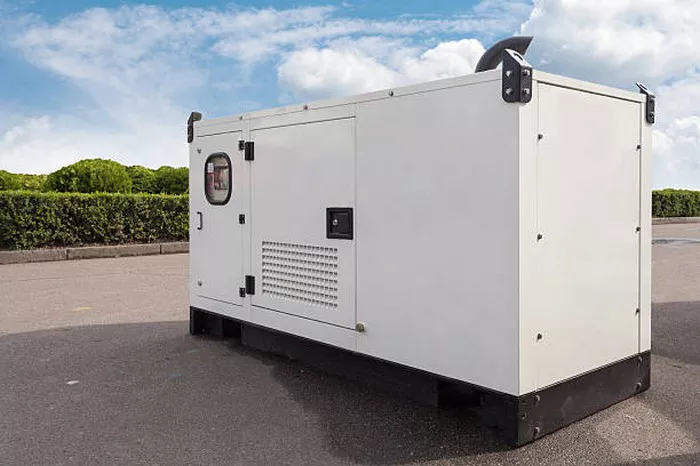Electrical equipment is essential in every aspect of modern life, powering industries, households, and technological advancements. However, the reliability and safety of such equipment are critical for ensuring smooth operation and preventing hazards. When electrical equipment fails to operate as intended or poses a safety risk, it is often termed “faulty electrical equipment.”
In this article, we will explore the concept of faulty electrical equipment, its causes, implications, identification methods, and prevention strategies. This information aims to raise awareness and guide individuals and organizations in addressing potential risks associated with electrical systems.
Understanding Faulty Electrical Equipment
Faulty electrical equipment refers to devices or systems that either fail to function properly or exhibit conditions that could lead to unsafe situations. Faulty equipment may present one or more of the following issues:
Failure to Operate as Intended
This includes situations where equipment does not start, stops intermittently, or delivers reduced performance.
Electrical Hazards
Equipment that causes sparks, electric shocks, or excessive heat can pose significant safety risks.
Physical Degradation
Wear and tear, corrosion, or visible damage can impair the functionality and safety of electrical devices.
Compliance Issues
Equipment that does not meet regulatory standards or certifications might be classified as faulty, especially in professional or industrial settings.
Common Causes of Faulty Electrical Equipment
Faulty electrical equipment can result from a range of issues, often involving design flaws, material failures, or improper use. Below are some of the most common causes:
1. Manufacturing Defects
Poor quality control during manufacturing can result in defective components or poorly assembled devices. Examples include:
- Faulty wiring
- Inadequate insulation
- Incorrect component specifications
2. Aging and Wear
All equipment has a finite lifespan. Over time, components degrade due to:
- Mechanical stress
- Thermal cycling
- Corrosion
- Insulation breakdown
3. Environmental Factors
Adverse conditions can accelerate equipment failure, including:
- Moisture and humidity
- Extreme temperatures
- Dust and debris infiltration
4. Overloading and Overuse
Using equipment beyond its rated capacity or for extended periods without proper maintenance can lead to overheating and mechanical failure.
5. Improper Installation or Maintenance
Errors during setup or lack of regular upkeep can compromise performance. Examples include:
- Loose connections
- Misaligned components
- Insufficient lubrication in motors or mechanical parts
6. Electrical Surges and Faults
Surges, short circuits, or grounding issues can damage equipment, leading to malfunction or safety hazards.
7. Human Error
Incorrect operation, mishandling, or accidental damage often contributes to equipment becoming faulty.
Signs of Faulty Electrical Equipment
Recognizing the signs of faulty equipment is critical for preventing accidents or operational disruptions. Common indicators include:
1. Visual Clues
- Burn marks or discoloration around connections
- Frayed or exposed wires
- Broken casing or housing
2. Audible Indicators
- Humming, buzzing, or crackling noises
- Unexpected popping sounds
3. Operational Issues
- Frequent tripping of circuit breakers
- Intermittent operation or sudden shutdowns
- Reduced output or efficiency
4. Safety Symptoms
- Electric shocks upon touching the equipment
- Unusual heat generation
- Emission of smoke or sparks
Risks Associated with Faulty Electrical Equipment
Faulty electrical equipment can have severe consequences in both residential and industrial contexts. These risks include:
1. Electrical Fires
Faulty wiring or overheating components can ignite fires, leading to property damage and loss of life.
2. Electric Shocks
Exposed wires or improper insulation can cause electric shocks, which can be fatal in severe cases.
3. Downtime and Productivity Loss
In industrial settings, equipment failure can halt operations, resulting in significant financial losses.
4. Environmental Damage
Leaks, explosions, or fires from faulty equipment can harm the environment.
5. Legal and Financial Repercussions
Non-compliance with safety regulations can lead to fines, lawsuits, and reputational damage.
How to Identify Faulty Electrical Equipment
Proactive identification and testing are key to mitigating risks associated with faulty equipment. Techniques include:
1. Visual Inspection
Regularly check for physical signs of damage or wear.
2. Electrical Testing
Insulation Resistance Testing: Measures the integrity of insulation.
Earth Continuity Testing: Ensures grounding connections are intact.
Portable Appliance Testing (PAT): Assesses the safety of portable devices.
3. Thermal Imaging
Detects hot spots in electrical components, indicating overheating or poor connections.
4. Vibration Analysis
Identifies mechanical issues in motors or rotating equipment.
5. Monitoring Systems
Modern equipment often includes diagnostic tools or sensors that provide real-time fault detection.
Prevention Strategies for Faulty Electrical Equipment
Preventing electrical equipment from becoming faulty involves a combination of proper installation, regular maintenance, and adherence to safety protocols. Below are some effective strategies:
1. Quality Assurance
- Purchase equipment from reputable manufacturers.
- Ensure compliance with relevant standards (e.g., CE, UL, or ISO certifications).
2. Proper Installation
- Use qualified professionals for installation.
- Adhere to manufacturer guidelines and local regulations.
3. Scheduled Maintenance
- Implement routine maintenance programs to inspect and service equipment.
- Replace worn-out components promptly.
4. Training and Awareness
- Train operators and technicians in proper equipment usage and safety practices.
- Promote awareness about the risks of faulty equipment.
5. Environmental Protection
- Use enclosures to shield equipment from harsh environments.
- Employ climate control systems for temperature-sensitive devices.
6. Surge Protection and Voltage Stabilization
- Install surge protectors to safeguard against voltage spikes.
- Use voltage stabilizers for equipment sensitive to power fluctuations.
Conclusion
Faulty electrical equipment poses risks that range from operational inefficiencies to severe safety hazards. Understanding the causes, signs, and risks of faulty equipment is the first step toward effective mitigation. By adopting robust maintenance practices, leveraging modern diagnostic tools, and ensuring compliance with safety standards, individuals and organizations can minimize the likelihood of faults and enhance the reliability of their electrical systems.
Regular attention to these aspects not only ensures smoother operations but also protects lives and assets, emphasizing the importance of proactive electrical equipment management in today’s world.

